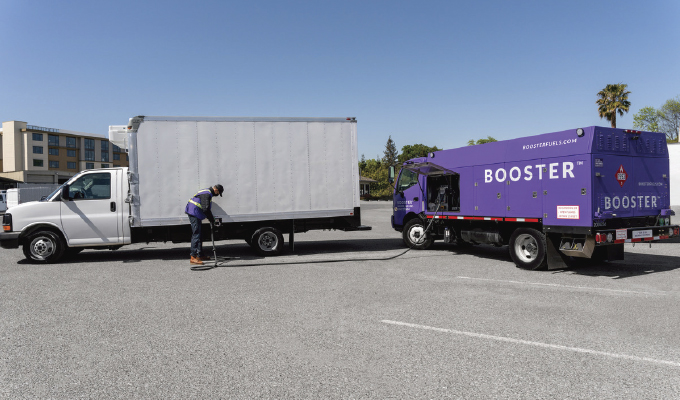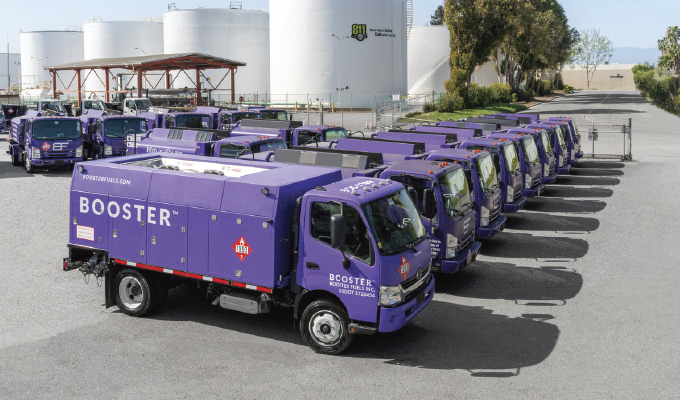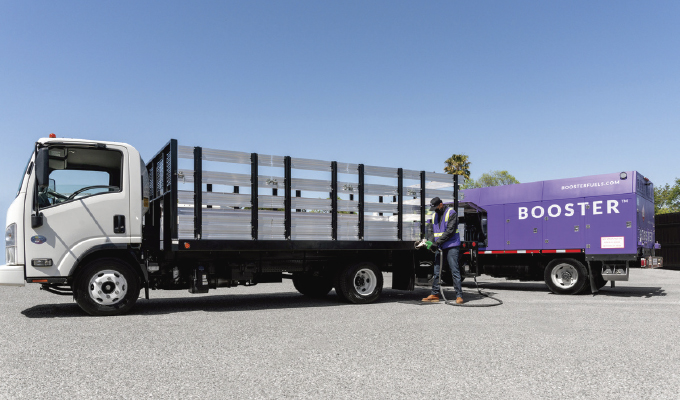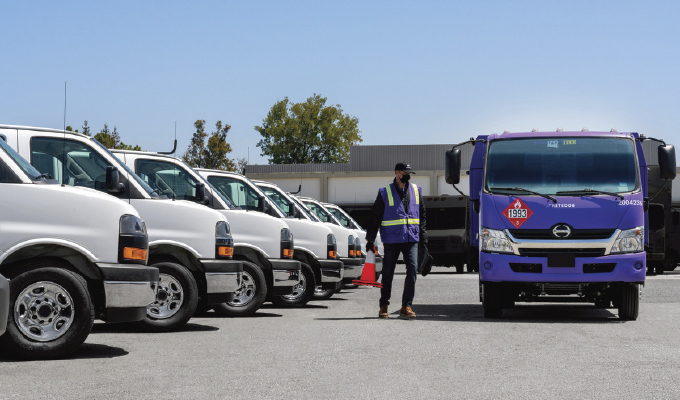New internal combustion engine (ICE) cars and trucks continue to hit the roads. By 2030, millions more will be sold, many joining mixed fleets alongside zero emissions vehicles (ZEVs). Yet even by 2040, when ZEVs are forecast to dominate new vehicle sales, according to Bloomberg, ICE vehicles will continue to serve specific missions and payloads. Now and in the future, all vehicles and their fuels will need to operate in compliance with stringent emissions targets.
Traditional fuels are being reformulated for lower emissions. A recent report by Mckinsey & Company explains that “sustainable fuels can provide GHG reductions comparable to BEVs and are applicable in multiple sectors,” helping to quickly decarbonize existing fleets while electric vehicles enter initial deployments. In fact, ASTM-certified renewable and synthetic fuels can reduce total carbon intensity well before tailpipe emissions even occur.
Fuel producers are also reinventing production methods. The route to your fuel tank is changing. Global energy companies and startups are introducing new low-carbon pathways regularly. Instead of legacy oil and gas refining, fuels can now be synthesized from renewable feedstocks, blended to suit specific applications, or converted from flexible energy carriers.
Fleet operators looking to decarbonize trucks and equipment should watch these trends and plan ways to improve overall efficiency while progressively reducing carbon emissions.

1. RENEWABLE FEEDSTOCKS
Demand for sustainable alternative fuels is expected to triple over the next 20 years, accounting for up to 37% of energy demand by 2050, according to Mckinsey & Company. While new fuels will be a crucial component of long-term decarbonization, their success as part of a low-carbon transition will rely on the eventual elimination of fossil-based sources. In other words, the need for new, renewable feedstocks will grow as well.
Already, a range of fuels from renewable natural gas and renewable diesel to ethanol and methanol are made from waste sources including biomass, municipal waste, industrial scrap, corn, soybeans, banana peels, and more. The output of sustainable alternative fuels coming from these feedstocks is growing globally. In many cases the resulting fuels are “drop in” replacements, indistinguishable from the fuels truck operators depend on already.
Bio-based renewable diesel, for example, can significantly reduce a diesel fleet’s life cycle greenhouse gas emissions while still maintaining high performance. Users can safely mix ASTM-certified renewable diesel within a single tank, allowing an easy transition back and forth with traditional fuel if necessary. No modifications, upgrades, or changes to vehicles or equipment is required.

2. BLENDED FUELS
Standard products such as clear diesel (CD) generally provide both energy and carbon content in a fixed relationship, firmly linked due to crude oil origins. Blending can change that relationship, altering the profile of a given product and its supply chain. Blends are not a new concept; it’s a long-established practice to produce a summer blend and a winter blend of many fuels. Now, blending has become much more sophisticated to suit geographies, vehicle use cases, and local cost factors.
Among several international producers, Renewable Energy Group offers a range of sustainable blended fuels, each tuned to lower emissions or increase certain performance measures compared to traditional fuels like clear diesel. On the production side, blending techniques offer flexibility and precision to make the right product for the right use.
For users, blended fuels allow for tradeoffs between emissions, costs, and specific energy content. Usually certified to standard specifications, blends with high renewable content can help fleets realize immediate direct and indirect carbon reductions (scenarios typically reported as Scope 1 or 3). As a result, blends generally receive strong policy attention, often subsidized or encouraged through programs such as California’s Low Carbon Fuel Standard.
Gasoline blends include ethanol variants (you’ve likely seen E85 in some markets) to newer, experimental options. The EPA intends to finalize a rule before summer 2023 allowing year-round sales of gasoline blended with a higher level of plant-derived ethanol to support cleaner combustion. A recent proposal from Southwest Gas aims to test hydrogen-blending scenarios for cold weather and high-elevation conditions, which would include blending hydrogen with natural gas or renewable natural gas.

3. FLEXIBLE ENERGY CARRIERS
Historically, most new fuels also require new end-to-end dedicated infrastructure: terminals, storage, transport, and stations. As a result, the adoption of new technologies such as fuel cells or micro-grids is typically held up by supply chain logistics. However, some energy types are emerging as multipurpose carriers, stored and transported through existing methods, but convertible to specialty fuels on-demand. This approach allows fuel suppliers and buyers to handle a single bulk product, only producing the final energy form when and where needed.
Dimethyl Ether (DME) offers an example. Typically synthesized from biomass, DME can be used as a precursor to renewable hydrogen, as a blending agent for propane, or as a replacement for some diesel applications. Similarly, a variety of synthetic gases (generally known as syngas) can be made from waste sources and transported easily, then converted at smaller facilities to a range of fuels including hydrogen, synthetic diesel, and synthetic aviation fuels. These varieties can be “built up” at the molecular level into hydrocarbon fuels, minimizing total carbon impact and allowing for customization.
MAKING SENSE
If you manage or operate a truck fleet, good news—there is massive fuel innovation underway on your behalf. Energy suppliers are developing new fuels and techniques, while infrastructure operators are making sustainable energy more available. Certainly some new fuel concepts will linger as research projects, and others will fail to offer practical sustainability impact. You will want to monitor the companies specializing in new processes and favor those that are able to pass regulatory and scientific scrutiny. Cross-validate the perspectives of engine OEMs and energy providers, and ask your fleet managers and service partners to recommend practical steps ahead.
You have new choices to optimize your fleet and reduce carbon emissions through the fuels you select. Depending on location, you may already be able to pump a bio-based blended diesel product as your next tank fill. More tailored solutions will include a diverse mix of fuels matched to applications, supplied through both fixed stations and mobile fueling partners. Regardless of the size of your fleet, treat fuel management as a critical function that connects fleet performance to your company’s long-term sustainability goals.
ABOUT THE AUTHOR
Chris Kaufield is the head of sustainability and electrification at Booster. Find out more about sustainable fuels and how to get them in your fleet, visit www.boosterusa.com.




